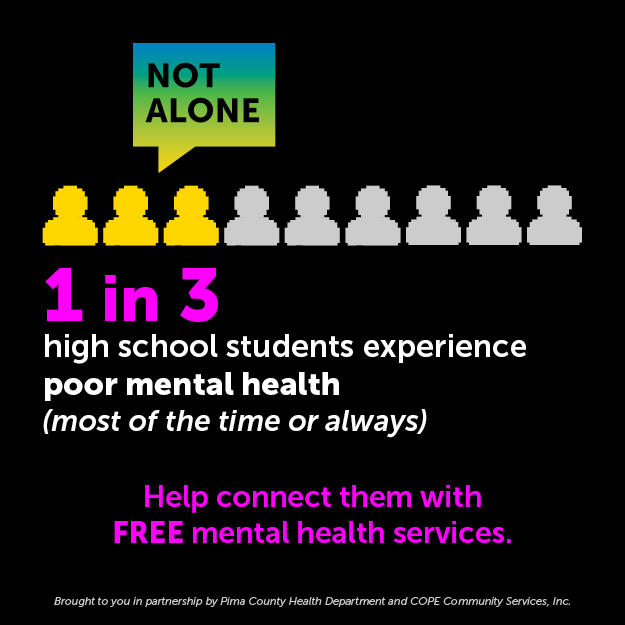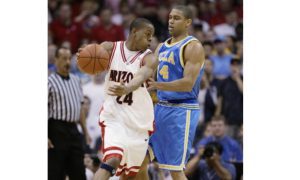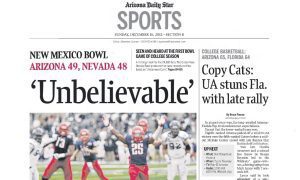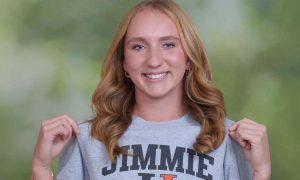Football is not the only sport to find badasses similar to what this Web site brought to our readers with Arizona’s Top 10 Football Badasses.
Just like the football ranking, the hoops list includes some of the most tough-minded, grind-it-out, never-accept-losing players in the history of the Arizona Wildcats’ program.
They embody the grit it took for Arizona to evolve from instability to one of college basketball’s elite programs.

The toughness was derived from the characteristics of Fred Snowden, Lute Olson and Sean Miller — Arizona’s three modern-day head coaches who brought their own toughness to the program.
Snowden grew up in the Motor City with blue-collar values. Olson was forced to grow up fast on a small farm in tiny Mayville, N.D., after his father and older brother passed away when he was only 6. Miller hails from Pittsburgh, the Steel City, where nothing is earned without putting in the hard work.
“Nastiness is required,” is what Miller’s message was to the Wildcats in 2009 when he was hired. Arizona was in search of an identity after Olson’s retirement saga in 2007 and 2008.
That identity is found in Miller’s intensity during practice and games.
“We’re not going to back down from anybody, no matter who you are, where you come from, how big you are, how tough you are,” Stanley Johnson told AllSportsTucson.com’s Anthony Gimino in a piece for TucsonNewsNow.com on Miller’s respect for the Detroit Pistons’ “Bad Boys” image in the late 1980s.
“We’re the tougher dudes and, guess what, we’re going to show you — not by fist fighting — but by how hard we play on every possession, how hard we crash the glass, how we play our offense, how we play our defense. That is just the way we play our basketball.”
We are breaking the top 10 list into three parts. Today is Part 1, the No. 10 through No. 7 badasses are listed. Check back for the other two parts very soon.
No. 10 — Jim “Guts” Rappis

Jim Rappis is the biggest badass to wear the Arizona uniform when it comes to playing through multiple serious injuries
A player nicknamed “Guts” simply can’t be left off a Top 10 badass list.
Jim Rappis, a point guard who could also shoot, matched his toughness with his smarts as a two-time All-Academic selection in the WAC. He was a model of perseverance in his Arizona career, overcoming numerous injuries that would sideline other athletes for long periods of time.
The list reads like a night at the ER:
— Rappis fractured an ankle as a freshman and still managed to play nine games afterward.
— He suffered a ruptured appendix at the beginning of his sophomore year and had a series of ankle injuries but still played in 24 of 26 games.
— Another ankle injury when he was a junior forced him to use a cane off the court throughout the season.
— He underwent surgery to correct a spinal disc before the 1975-76 season and was in grave danger of losing his life when he contracted peritonitis (inflammation of a thin layer of tissue inside the abdomen, caused by bacteria or fungus).
— In the 1976 West Regional Semifinal — one of the most thrilling games in Arizona history when the Wildcats beat Jerry Tarkanian and UNLV 114-109 in overtime — Rappis injured his left heel with 5:57 left in the first half but continued to play despite being hobbled throughout. He finished with 24 points and 12 assists against the Runnin’ Rebels. His 12 assists exceeded UNLV’s team total.
“Jimmy is the epitome of courage,” Arizona coach Fred Snowden was quoted as saying by the Tucson Citizen after the game.
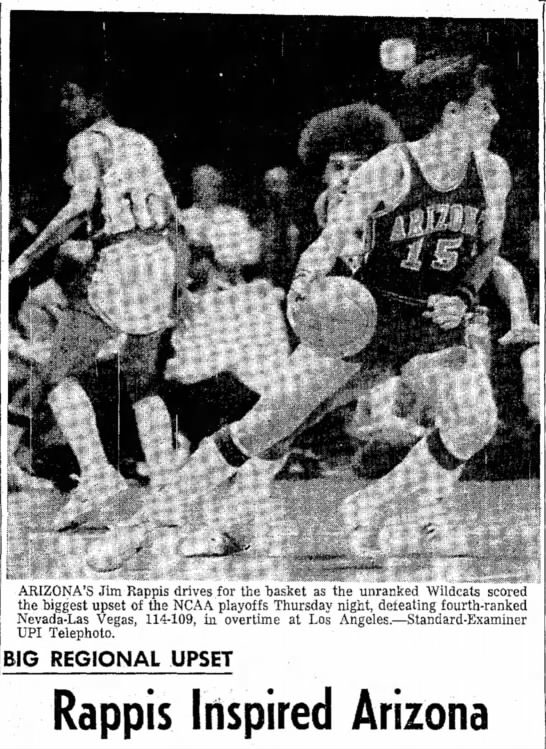
1976 newspaper clipping signifying Arizona’s Sweet 16 win over UNLV in overtime
His heel injury limited him to only four points against UCLA in the West Regional Final, lost by the Wildcats 82-66 at Pauley Pavilion. Rappis was still selected to the NCAA West Regional all-tournament team.
His teammates called him “Guts” and Snowden labeled him “The Six Million Dollar Man.”
“He would arrive to games on crutches,” Snowden told me in a 1990 interview with the now-defunct Cat Tracks magazine, “but he would go out and play like there was absolutely nothing wrong with him.
“He joined us late in December (following back surgery) without the benefit of fall practice, and he walks out there and was one of our leading scorers. He was a courageous, incredible athlete.”
Rappis gained some of his toughness by playing football. He was also an accomplished quarterback at Waukesha (Wis.) High School before Snowden lured him to Tucson after his hire as Arizona’s coach in 1972.
Rappis, 59, is retired and lists residences in Tucson and his hometown of Waukesha.
No. 9 — John Edgar
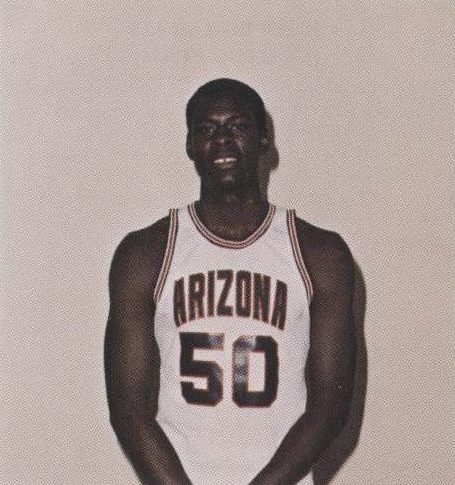
John Edgar was known for his relentless style around the basket
Nobody in Pac-12 circles is more knowledgeable about players and teams throughout the years than Bud Withers, a veteran journalist who retired not too long ago from the Seattle Times.
When he was with the Eugene (Ore.) Register-Guard in 1986, Withers described Arizona’s 6’6″ and 240-pound center John Edgar — yes, you read that right, a 6’6″ and 240-pound center: “bullish” with “overachieving play.”
A player at that proportion manning the middle must be a badass, not only to make the cut in college basketball, but to start for a conference championship team.
Edgar was a senior captain of Arizona’s first Pac-10 title team in 1985-86, a rock in the middle. He may have been short and stout, by the measure of a typical post player, but he could jump as well as muscle his way around the hoop. He reportedly had a vertical leap of 40-plus inches.
Edgar averaged 11.1 points and a team-high 7.3 rebounds while shooting 50.9 percent from the field as a senior. He served as co-captain with Steve Kerr.
In his fifth game at Arizona in 1984-85, after transferring from Pasadena (Calif.) City College, Edgar muscled his way to the hoop after tip-off for a spectacular dunk at NAU. On the next play, 30 seconds later, he showed his relentless style by diving after a loose ball.
He suffered a scratched eyeball on the play as a result of tangling up with NAU players. He missed the next four games because of double vision and stuck it out the rest of the season despite recurring problems.
His teammates mentioned the word “payback” when Arizona prepared for NAU the following season in Tucson. Edgar responded with a career-high 21 points in the Wildcats’ victory.
Edgar’s vision was back to normal as a senior and opponents such as the Lumberjacks paid the price of his renewed vigor.
Most Arizona basketball aficionados remember Craig McMillan’s “McClutch” shot at the buzzer that beat Oregon State in overtime on Jan. 23, 1986. What they don’t remember is Edgar’s team-high 20 points and game-high 10 rebounds in that pivotal game against the first-place Beavers.
The more balley-hooed Oregon State center, Jose Ortiz, had lesser numbers than Edgar with 16 points and six rebounds.
Edgar lives in Chino Hills, Calif., and is a senior vice president for Countrywide Home Loans.
No. 8 — Joseph Blair
Arizona’s former graduate assistant Joseph Blair did not sulk or shy away from his “war” scar he received a couple of years ago on his forehead during practice.
He posted a picture of the two- to three-inch scratch, a result of him scrapping for the ball at the basket with Rondae Hollis-Jefferson. On his Instagram he posted this along with another photo: Practice war wounds! #bloodsweatandtears #iputonformyteam #dontcallmeafakesupporter #scarface #stilllookgood #thanksRondae #onlywaytheycanstopme #blackharrypotter #larrypotter #BlairDown #Blairizona
Just another example of why Blair belongs on this list.
Opposing fans, who did not know of Blair, probably saw him dressed in a suit on the bench and said to themselves: “Glad he’s not playing.” Blair, 6’10” and 250 pounds, looks like he can still ball with the college kids at 42.
Blair is now an assistant coach in the NBA D-League with Houston’s affiliate Rio Grande (Texas). Former Arizona player Matt Brase (Lute Olson’s grandson) is the head coach for that team.
To the benefit of Arizona big men Kaleb Tarczewski, Brandon Ashley and Dusan Ristic, Blair joined the team in practice as the graduate assistant three seasons ago. None of Tarczewski, Ashley or Ristic can say they went up against a better, more physical Pac-12 center than what they saw every day against Blair.

(Joseph Blair photo)
“With our frontcourt players in particular, there is nothing like having somebody as big and physical out there to go against as JB is,” Miller said before the 2013-14 season, when he brought Blair on board.
“It will, for example, really help Kaleb Tarczewski. You can really go at a basket for 20 minutes or 30 minutes and get live game repetitions against someone as big and as smart and as physical as JB is. And then the knowledge he has accumulated over his career, he can share that with someone like Kaleb.”
One of Blair’s best games at Arizona was in the 1994 Sweet 16 game against Louisville when he was matched against Clifford Rozier, a 6’11” All-American center who was taken in the first round of the NBA draft that year. Blair’s physical style of defense — constantly bodying up against the opponent making sure they knew he was there — took Rozier completely out of his game.
Rozier took only four shots in 36 minutes in Arizona’s 82-70 win over Louisville. Reports indicated that Blair “muscled” Rozier and Rozier became a non-factor.
When he was a junior at Arizona, Blair got a tattoo on his left upper arm of a two-color rendition of a fierce bull with its left hoof balanced on a basketball.
“It symbolizes how I play basketball,” Blair told the Tucson Citizen. “Nobody comes near me without getting bumped or bullied around. I’m big and mean and tough.”
When he played 13 years professionally overseas, Blair had his share of physical altercations against the big, brooding Europeans and more than held his own. He became a fan favorite at Arizona and overseas because of his physical, no-nonsense style on the court.
Off and on the court, Blair has always carried an extreme sense of confidence in his ability. The word shy and Blair do not mix, symbolic of a badass.
Before a game against Montana in 1995, Blair drew the ire of Lute Olson by predicting in a television interview that “we’re going to kick Montana’s (rear).” You can guess what the word other than “rear” was. Olson intervened and Blair later responded by saying, “If I can’t say what I want to say, I’m not going to say anything at all.”
Blair’s self-imposed blackout lasted all of one game. After the next victory, he was back to normal.
“All I know is I wanted to come out, jump on them early and kick their (rear),” he said. “Oops, I didn’t mean that. I meant to say beat them bad.”
“Nobody comes near me without getting bumped or bullied around. I’m big and mean and tough.”
— Joseph Blair, explaining a tattoo of a bull on his arm when he was playing with Arizona
Blair has become a fixture in Tucson, aside from his affiliation with Arizona, as the president of Blair Charity Group.
Blair has hosted youth basketball camps since when he was a member of the Harlem Globetrotters and ran their youth camps all across the country. That inspired Blair to run his own camps and eventually start the Blair Charity Group, which focuses on the development Tucson’s youth on and off the court.
“What we do is provide free-of-charge leadership and social-skill based basketball camps and clinics around the Tucson community,” Blair said. “We lure the kids in with basketball and teach them other skills. It’s also a great way to bring our community together.”
Blair has credited his mother Judith Blair for his desire to give back to his community. Judith made the ultimate sacrifice, donating one of her kidneys to Dr. Michael Burgoon, a former professor of communications at Arizona.
The Arizona Daily Star and the Tucson Hispanic Chamber of Commerce honored Joseph two years ago with its “40 under 40” award given to individuals under 40 who are making an impact in the community with their professional and charitable work.
The Star noted: “Upon further discernment, given his philanthropic nature, Joseph’s identity is that of a tough-yet-tender man with a ‘big heart.'”
No. 7 Eugene Edgerson
During his time with the Harlem Globetrotters, Eugene Edgerson was nicknamed “Killer”. Any doubt he belongs on this list of Arizona hoops badasses? …
One of the referees who worked the Globetrotters’ games mentioned Edgerson should be called “The Enforcer.” That name fits his style of play because of how he controlled the paint with his relentless energy on rebounds during his Arizona days. The popular reserve player — who was part of two Arizona teams that reached the NCAA title game — always let his presence be known, even as an entertainer with the Globetrotters.
Opposing players had the chance to meet his elbows, not always intentionally, of course.
“When I’m out there on the court, I’m just making things happen, and I make the opposing team back down because I’m intimidating,” Edgerson told the Arizona Daily Wildcat in a 2004 interview. “Although it’s a show and everything (with the Globetrottters), I’m a competitor at heart.
“I was boxing this guy out real hard, and I threw in a couple elbows (laughs). You know, not on purpose or anything like that, it’s just instinctive. Sometimes I’ve just got to remember, ‘Gene, you’ve got to relax.’ My coaches and teammates love it, because I give it my all.”
Edgerson, whose toughness allowed him to flourish from a modest upbringing in New Orleans, always defended his team and teammates with vigor.
After Arizona throttled Michigan State, perceived to be more physical than the Wildcats, in the 2001 Final Four, Edgerson told reporters: “We ain’t no punks.”

Eugene Edgerson now officiates Southern Arizona basketball games (Andy Morales/AllSportsTucson.com)
Edgerson’s experiences on the court were not always pleasurable. He once knocked out BYU center Bret Jepsen with an elbow in a game at Provo, Utah, in 1998. After jostling with Jepsen on a few occasions, Edgerson elbowed him while running upcourt. Jepsen was unconscious for less than a minute.
Arizona coach Lute Olson suspended Edgerson afterward but later defended him after reviewing what happened on film. Edgerson claimed Jepsen initiated the contact with elbows of his own and Olson concurred.
“There were a couple of incidences, and I told the officials to call a foul,” Edgerson explained to the Deseret News. “I took the law into my own hands. It wasn’t the right thing to do. But no one’s going to walk all over Eugene Edgerson.
“If (Jepsen) can dish it out, he should be able to take it. I felt at the time he was trying to take me out. It was either him or me. Unfortunately, he was the one taken out.”

Edgerson offered a public apology and wrote a letter to Jepsen, who did not respond.
“I told him I was sorry. What I did was wrong. I never denied that,” Edgerson said. “I felt so bad on the plane ride home after the game. It was in the heat of the battle, and I lost my cool. I never thought the guy wouldn’t be playing basketball anymore. I regret that. I never intended to hurt him for the rest of his life.”
Edgerson has endured other personal problems. The important theme to his story: He tries to improve himself during the difficult times, starting from when he was raised in New Orleans.
Edgerson redshirted late in his Arizona career (when he was an academic senior) to teach kindergarten as part of one of his courses.
He earned a Master of Arts in Teaching and Teacher Education degree in 2004 with a GPA of 3.625. He was a member of the 2001 Pac-10 All-Academic team.
He was given the title of “ambassador” of the Harlem Globetrotters for seven months between 2008 and 2009.
Edgerson has served as an educational consultant for the Arizona School Transformation Group in Tucson in recent years. He counsels youths and motivates them. He serves as a mentor and helps students set goals to improve themselves as students and people.
In a twist of irony, Edgerson also now serves as a certified referee for Southern Arizona high school basketball games. He officiates games involving the YMCA, Boys and Girls Club, Jewish Community Center, Kino Center and Tucson Summer Pro League and ACCAC men’s basketball.
He continues to enforce the action the court, only in a different way.
Make sure to check back at our site for the continuation of this series.
FOLLOW @JAVIERJMORALES ON TWITTER!
ALLSPORTSTUCSON.com publisher, writer and editor Javier Morales is a former Arizona Press Club award winner. He is a former Arizona Daily Star beat reporter for the Arizona basketball team, including when the Wildcats won the 1996-97 NCAA title. He has also written articles for CollegeAD.com, Bleacher Report, Lindy’s Sports, TucsonCitizen.com, The Arizona Republic, Sporting News and Baseball America, among many other publications. He has also authored the book “The Highest Form of Living”, which is available at Amazon.


